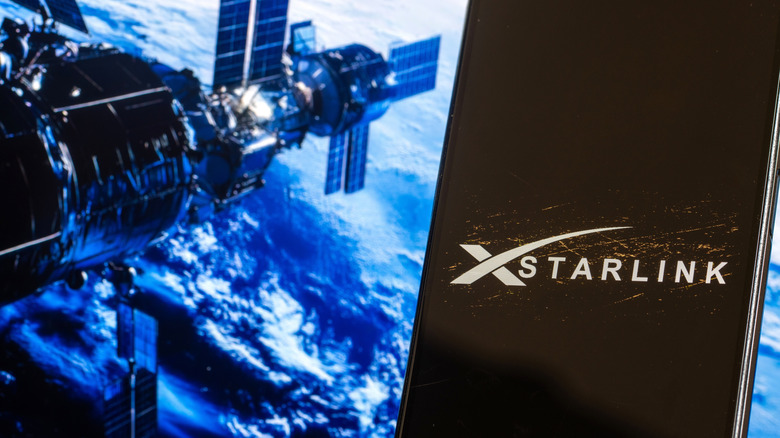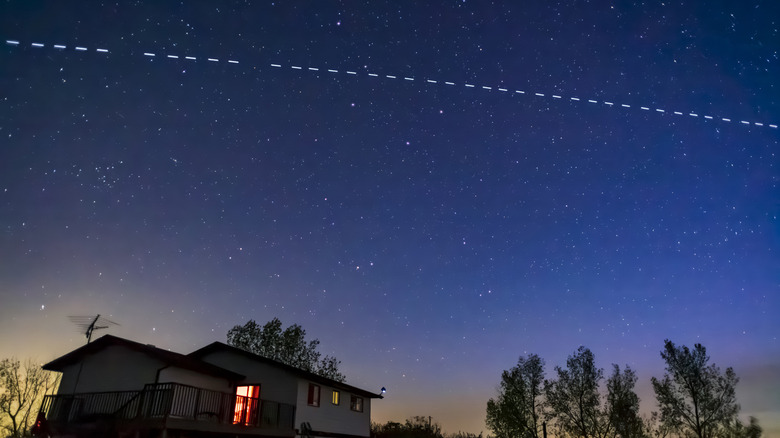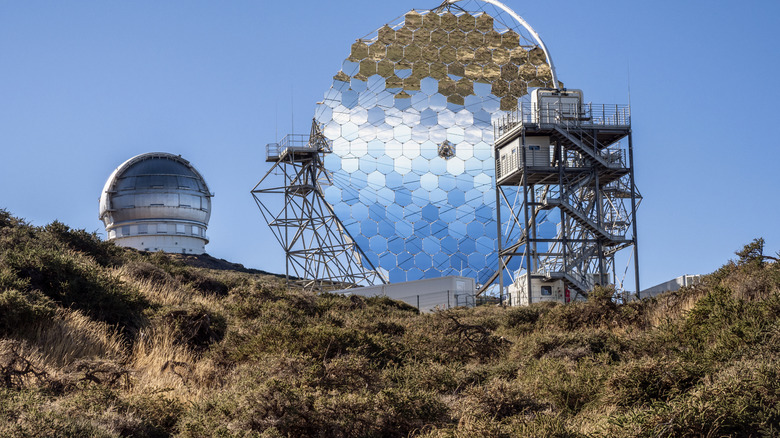How Many Starlink Satellites Are In Orbit?
Starlink,a division of SpaceX, provides satellite internet around the world. It is ideal for those who live in rural areas as connection speeds are often improved over what local companies offer. It's also useful for travelers who want to take their internet with them on the road. Instead of looking for local cafes or trying to find other public sources of Wi-Fi, they can access Starlink internet from almost anywhere.
Considered a better option than Viasat, from a speed and convenience perspective, Starlink has changed the game when it comes to satellite internet. Amazon's Project Kuiper may be a promising Starlink alternative, but for now it is still in the developmental stage and is not publicly available.
Starlink has been able to achieve its success in part due to how many satellites it has in orbit. As of this writing, over 8,400 Starlink satellites are above Earth, with more planned for the future. However, the exact number fluctuates because not all of the satellites survive the journey into space and sometimes fall out of orbit. Despite Starlink's optimistic plans about the future, there are mixed opinions on whether or not such a large number of satellites is a good thing.
The changing number of Starlink satellites
As of September 25, 2025, there were 8,475 Starlink satellites in orbit and the company has plans for up to 42,000. For those who use the Starlink Mini for travel, that is likely exciting news as it means stronger global coverage. To put this number into perspective, there have been 23,030 total satellites launched since 1957 and of those, 15,280 are still in orbit according to records kept by the European Space Agency.
The first Starlink satellites launched in 2019 as a group of 60. However, not all Starlink satellites stay in orbit for the expected five years as solar storms can cause them to fall back to Earth prematurely. This is due to the geomagnetic activity causing greater atmospheric drag on the satellite.
In February 2022, for example, a geomagnetic storm hit one day after the launch of 49 Starlink satellites. It caused 40 of them to drop from orbit and burn up during reentry. There was also an incident in July 2024 when a SpaceX rocket released 20 Starlink satellites too early. All of them fell from the sky and burned up in Earth's atmosphere.
Reactions to Starlink's growth
Some are likely excited about the future promised by Starlink and its fast internet speeds. However, not everyone is happy about the current number of satellites in orbit and plans for even more. Concerns have been raised about the satellites posing debris hazards in space, interfering with astronomical observations, and ruining the view of the night sky.
In 2019, the International Astronomical Union, which represents over 13,000 astronomers from 92 countries worldwide, released a statement in response to Starlink's plans. Concerns centered around the reflective surfaces of the satellites causing problems with sensitive ground-based telescopes and that radio signals coming from these satellite constellations could interfere with astronomical observations.
However, the owner of Starlink, Elon Musk, is confident that his satellite plans won't interfere with astronomy. In a conversation on X, which Musk owns, he stated, "There are already 4900 satellites in orbit, which people notice ~0% of the time. Starlink won't be seen by anyone unless looking very carefully & will have ~0% impact on advancements in astronomy."


